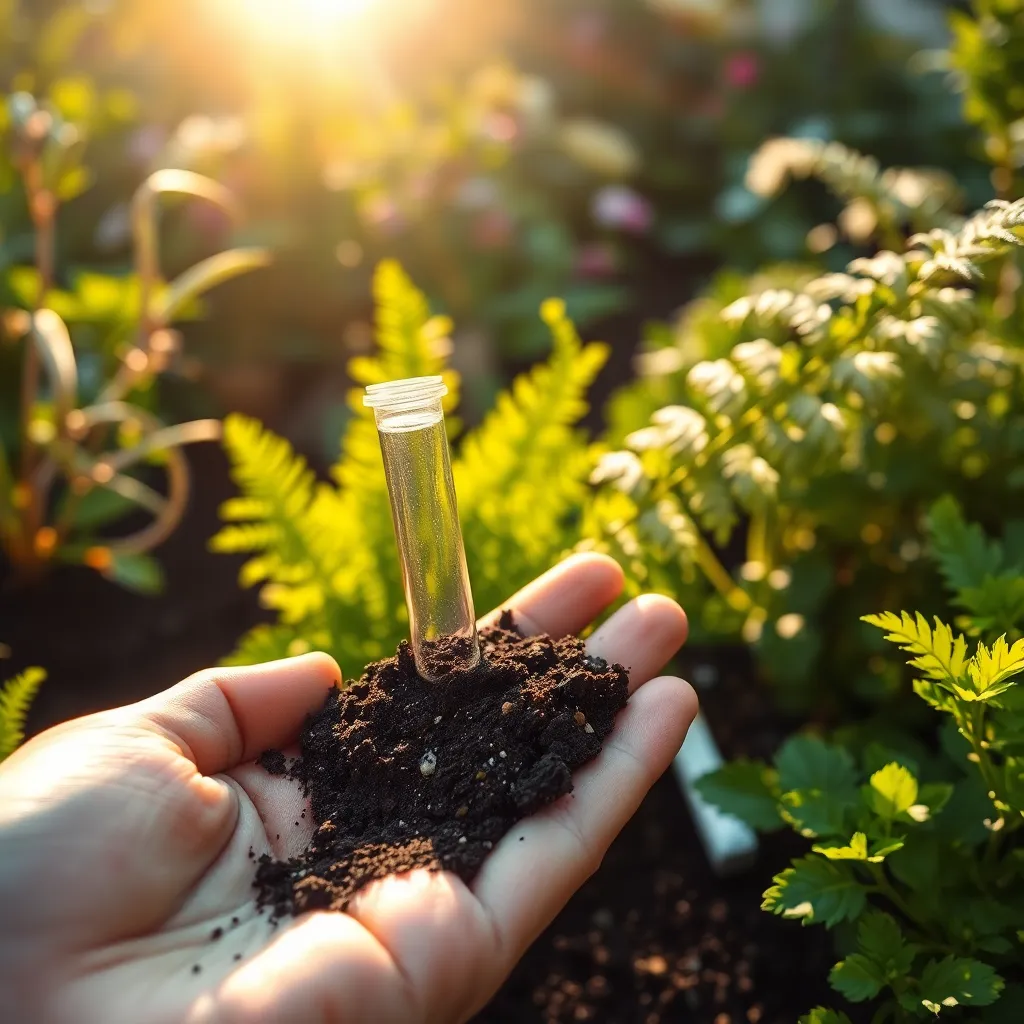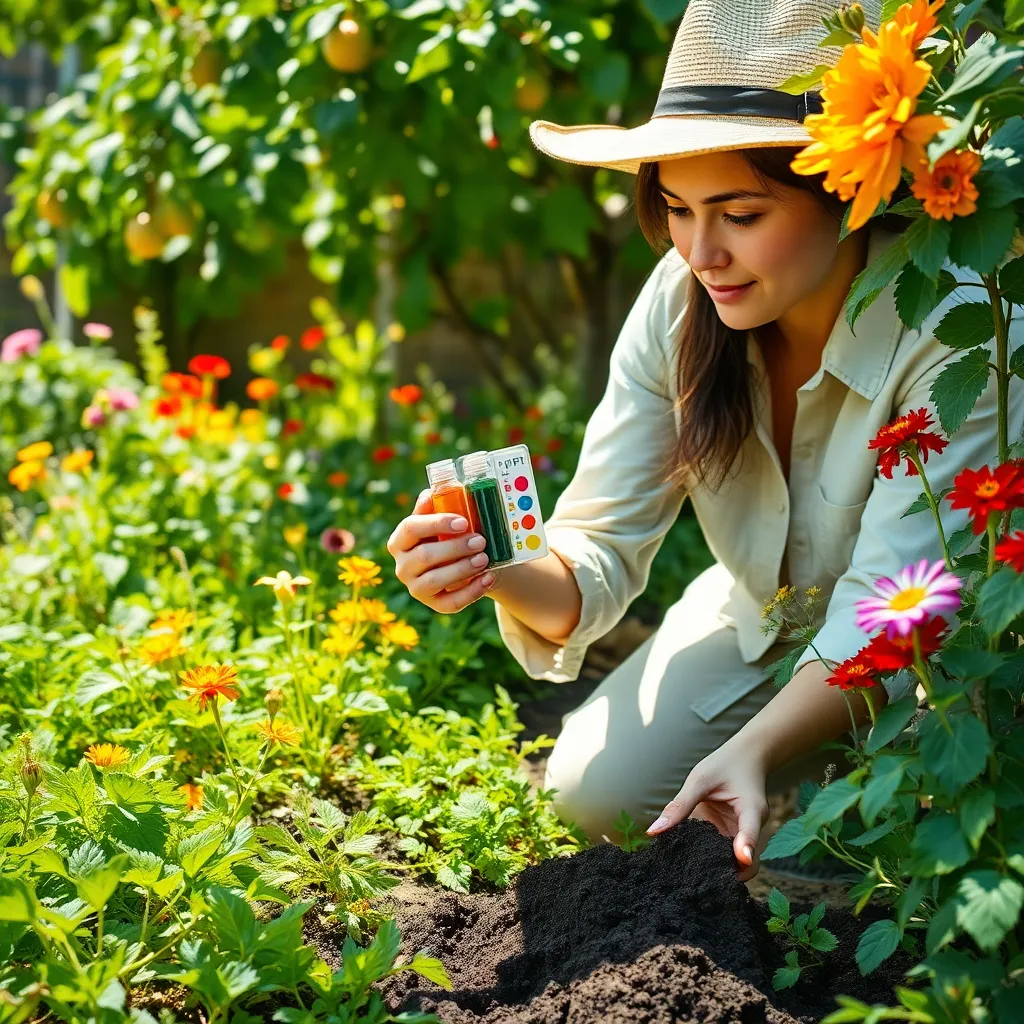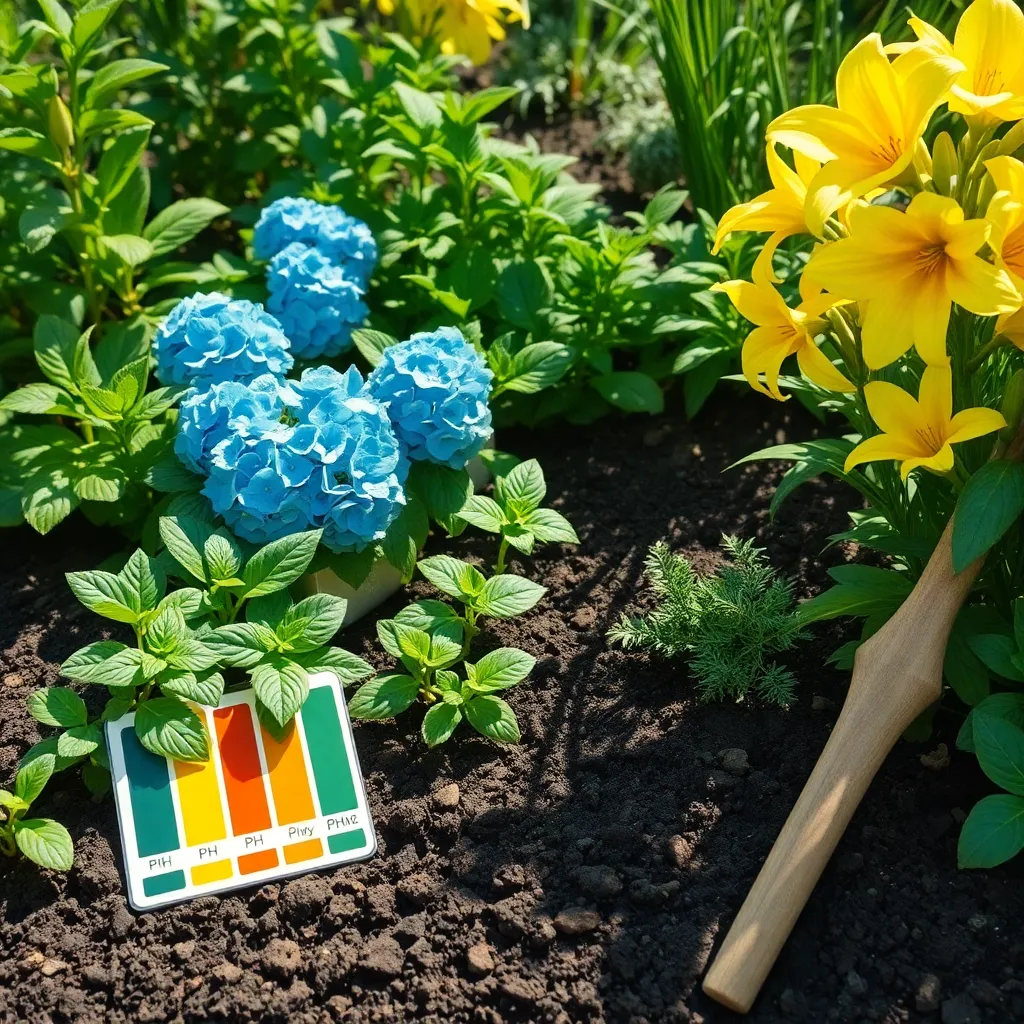Gardening is a journey of discovery, and understanding the pH of your garden soil is one of its most intriguing chapters. Whether you’re just starting to turn the soil or you’ve been nurturing your garden for years, getting to know the acidity or alkalinity of your soil can unlock new possibilities for your plants. Soil pH is not just a scientific term; it’s a gateway to understanding how plants interact with the earth, and it plays a crucial role in their growth and health.
The magic of pH lies in its ability to reveal the hidden world beneath your feet, where nutrients are either readily available or frustratingly out of reach. In this article, we’ll explore how soil pH affects plant nutrition and what you can do to adjust it for optimal growth. You’ll learn practical steps to test your soil’s pH, interpret the results, and make informed decisions to create a thriving garden ecosystem.
As we delve deeper, we’ll share insights that cater to both budding gardeners and seasoned horticulturists. You’ll discover how certain plants prefer specific pH levels and how this knowledge can transform your garden into a lush, vibrant haven. With a little guidance and enthusiasm, you’ll see that understanding soil pH is not a daunting task but an empowering tool that brings you closer to your garden’s potential.
Introduction to Soil pH Basics

Understanding soil pH is fundamental for successful gardening, as it influences nutrient availability and plant health. The pH scale ranges from 0 to 14, where 7 is neutral, below 7 is acidic, and above 7 is alkaline.
A soil test is the most reliable way to determine your garden soil’s pH. Home test kits are widely available and offer a simple method to get accurate readings.
Once you know your soil’s pH, you can make adjustments to create optimal growing conditions for your plants. For instance, if your soil is too acidic, adding lime can help raise the pH.
Some plants, like blueberries and azaleas, thrive in acidic soils with a pH of 4.5 to 5.5. Alternatively, vegetables such as cabbage and spinach prefer slightly alkaline conditions, ranging from pH 6.5 to 7.5.
To maintain the ideal pH, monitor your soil regularly and adjust as necessary. This ensures that your plants receive the nutrients they need, promoting vigorous growth and abundant yields.
Testing Your Garden Soil pH

Understanding your garden’s soil pH is crucial for optimal plant growth and health. Testing the pH of your soil helps you tailor your gardening practices to meet the specific needs of your plants.
A simple soil pH test can be conducted using a home testing kit available at most garden centers. These kits usually come with instructions and all necessary materials, making them an accessible option for beginners.
For those who prefer a more precise analysis, sending a soil sample to a local extension service or professional lab can provide detailed results. This service often includes recommendations for amendments to adjust your soil’s pH levels.
To collect a soil sample, dig a small hole about 6-8 inches deep and take a slice of soil from the side of the hole. Repeat this process in several areas of your garden to get a representative sample, as soil pH can vary across your garden plot.
Once you have your soil samples, mix them in a clean container to create a composite sample. This mixture will give you a more accurate reading of your overall soil pH.
After testing, if you find your soil is too acidic (low pH), you can add lime to raise the pH. Conversely, if your soil is too alkaline (high pH), sulfur or organic matter like peat moss can help lower it.
Regularly testing your garden soil’s pH, ideally once a year, helps maintain ideal growing conditions. Keeping records of your soil tests can guide future planting and amendment decisions.
By understanding and managing your soil pH, you can ensure your plants have a healthy environment to thrive. This knowledge empowers you to make informed choices, leading to a more productive and beautiful garden.
Impact of pH on Plant Health

The pH level of your garden soil is crucial because it affects how well plants absorb nutrients. In soils with a pH that’s too high or too low, plants can struggle to access the essential nutrients they need for growth.
For most plants, a balanced pH between 6.0 and 7.0 is ideal, as it allows for optimal nutrient uptake. You can use lime to raise the pH of acidic soils or sulfur to lower the pH of alkaline soils, ensuring your plants have the best conditions to thrive.
Always consider the specific pH preferences of different plants when planning your garden. Blueberries and azaleas, for example, prefer more acidic conditions, while lilacs and clematis thrive in neutral to slightly alkaline soils.
Monitoring soil pH can help you prevent nutrient deficiencies that might lead to poor plant health. If plants show signs of yellowing leaves or stunted growth, it could be due to improper soil pH, and adjusting it can make a significant difference.
Advanced gardeners may want to experiment with pH adjustments to encourage specific plant characteristics, such as enhancing flower color in hydrangeas. By manipulating soil pH, you can turn hydrangea blooms blue in acidic soils or pink in more alkaline conditions.
Regular soil testing is essential to maintain a balanced pH, which can fluctuate over time due to factors like rainfall and fertilization. It’s a good practice to test soil pH annually and adjust as necessary to keep your garden thriving.
Adjusting Soil pH Levels

Adjusting soil pH is a crucial step in ensuring optimal plant growth and health. Begin by testing your soil’s current pH level using a home test kit or by sending a sample to a local extension service.
To raise the pH level, use garden lime, which is widely available and easy to apply. Spread the lime evenly over the soil and work it in lightly with a rake, then water thoroughly to help it integrate.
If you need to lower the pH level, consider using sulfur or aluminum sulfate, which are effective but require different application rates. Always follow the package instructions carefully, as over-application can harm plants.
For those with more experience, consider using organic matter like compost or peat moss to gradually adjust pH naturally. This method not only alters pH but also improves soil texture and nutrient content.
Regularly monitor your soil pH, especially if you’re growing plants that are sensitive to pH changes, such as blueberries or azaleas. Adjustments may need to be repeated annually as environmental factors and plant uptake can cause changes over time.
Choosing Plants for Your pH

Understanding the pH preferences of your plants is essential for successful gardening. Most plants thrive in a neutral pH range of 6.0 to 7.5, but some have specific requirements that can affect their growth and health.
For instance, blueberries and azaleas prefer more acidic conditions, with a pH between 4.5 and 5.5. Planting them in soil with a higher pH may result in nutrient deficiencies, so consider using peat moss or sulfur to lower the pH before planting.
On the other hand, certain vegetables like cabbage and asparagus do well in slightly alkaline soil, around a pH of 7.0 to 8.0. If your soil is too acidic for these plants, you can raise the pH by incorporating lime into the soil a few months before planting.
Testing your soil pH is a crucial first step in selecting the right plants for your garden. Home testing kits are readily available and easy to use, giving you a clear picture of your soil’s condition.
Once you know your soil’s pH, you can select plant varieties that are naturally suited to those conditions. This approach minimizes the need for constant adjustments and ensures your plants receive the nutrients they need.
For advanced gardeners, experimenting with plants that have different pH requirements can be rewarding. By creating microenvironments with varied pH levels, you can diversify your garden and explore new growing possibilities.
Conclusion: Growing Success with These Plants
In our journey through ‘Understanding The pH Of Garden Soil,’ we’ve unearthed five key relationship concepts: the importance of knowing your soil’s pH as a foundation, the role of balance in fostering healthy growth, the impact of external influences on your relationship environment, the necessity of regular check-ins to ensure ongoing harmony, and the power of nurturing to cultivate a thriving partnership. These insights mirror the care and attention required in our personal relationships, reminding us that understanding and adjusting to our partner’s needs is crucial for growth.
As a next step, take a moment today to assess the ‘pH’ of your relationship. Engage in an open conversation with your partner about your current dynamics and areas for improvement. This proactive approach can be the catalyst for positive change.
Remember to save or bookmark this article for future reference, as these relationship insights are invaluable tools for nurturing your bond. Embrace the journey with confidence, knowing that every step taken towards understanding and adaptation paves the way for lasting relationship success. With dedication and care, your partnership can flourish, much like a well-tended garden.

